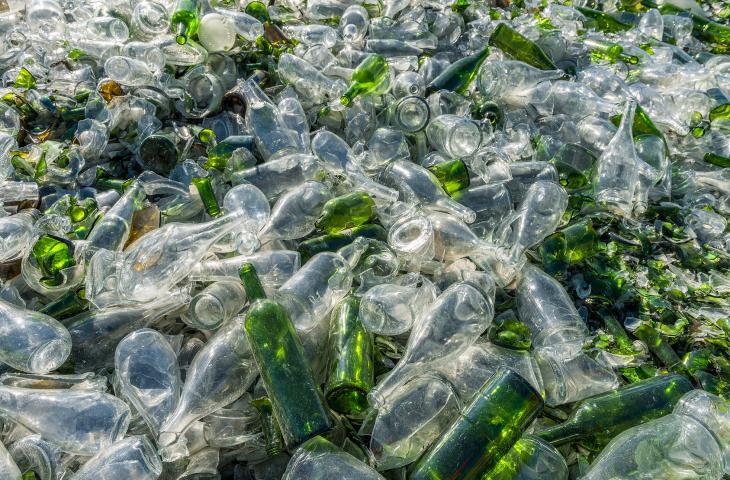MILAN – In 2014 the recycling of glass permitted savings of 780,174 tonnes of CO2. “The recycling of glass and the new European objectives for the circular economy” report, drawn up by Foundation for Sustainable Development on behalf of Assovetro outlines the environmental advantages. In addition to emissions, recycling of glass means a reduction in the consumption of natural resources (3,020,002 tonnes in 2014) thanks to energy savings (4,617 TJ) and the decomposition of carbonates present in the mixture normally used in glass making.
The South trails behind
The South is trailing behind not only in terms of waste separation (358,719 tonnes compared with 1,038,734 in the North. Lombardy on its own collects 399,343 tonnes, more than the entire South of Italy), but also in terms of glass recycling. In particular, the investigation found that, per capita recycling of packaging was 26.6 kilos per inhabitant in Italy in 2014. But with regard to the macro geographical areas, the North has 34.9 kg/inhab.day, the Centre 24.6 kg/inhab.day and the South only 16.6 kg/inhab.day, with a recycling rate in the North that has reached nearly 73% compared to 54.9% in the South. In order to achieve the new targets for recycling set by the recent EU circular economy package (75% in 2025 and 85% in 2030), recycling per capita should be 28.4 kilos by 2025 and 32.2 kilos by 2030. A much greater effort is required of the South. In 2025 the rate of recycling in the South should, in fact, increase by 20%, compared to 2% in the North.
Circular economy
Studies have also evaluated the environmental benefits that would result from the achievement of the objectives set by the circular economy package for 2030. Considering that consumption was the same as 2014, 338,000 more tonnes will have to be recycled than in 2014, which will mean a saving of 59,737 toes, 633,000 tonnes of raw materials and will avoid the emission of 389,861 tonnes of CO2 eq.
“The circular economy,” declared the Minister of the Environment Gian Luca Galletti, “is the strategic choice Italy has made for sustainable development. The field of glass, which is 100% recyclable, is at the forefront. It is an extremely good achievement for the recovery and reuse of materials.” According to the president of the hollow glass division of Assovetro, Marco Ravasi, “glass is a material that fits the circular economy concept perfectly, based on the ‘produce-consume-reproduce’ principle; with the new European objectives it will be necessary to improve waste separation and innovation in the sector.” “Glass, commented Edo Ronchi, President of the Foundation for Sustainable Development, is a reference model for the circular economy that aims to reduce the extraction of raw materials from the environment, to minimize the production of waste, to put materials back into circulation and zero waste to landfills.”
by Salvatore Galeone











